There are a whole host of ways in which water molds and other “white” organisms can present in the aquarium. The terms for such “fuzz” include fungus, mold, slime, tufts, coating, cotton, white streamers, fog etc. Most of these white fuzzy growths are species of “water mold” (order Saprolegniales, generally from three genera: Achlya, Leptolegnia, or Saprolegnia). “Water Mold” used to be called “fungus” but that term is no longer correct.
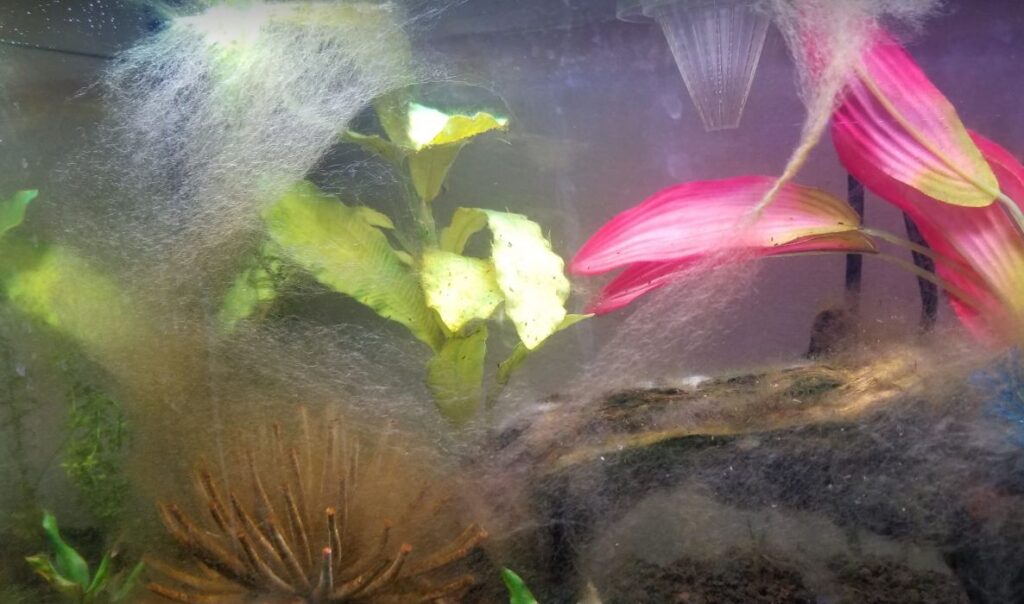
Water mold, (order Saprolegniales, phylum Oomycota, kingdom Chromista) are about 250 species of filamentous funguslike organisms. They can vary considerably in appearance, depending on such variables as the species of water mold, the water movement and the chemistry of the water. In addition, there are a whole host of other organisms such as bacteria, ciliates and algae which can be part of the structure of the water mold or mimic the water mold structures.

The typical way in which these white growths occur in the aquarium is that water molds feed on anything organic in the water, especially carbohydrates. So if the water has carbohydrates in it the white water mold will form on anything and everything.
Common sources of these dissolved carbohydrates are:
- uneaten food
- plants which are not thriving
- wood in the aquarium (especially boiled wood)
- Indian almond leaves or similar products
- “Stress Coat” products which are aloe vera gel. Aloe vera gel is pure carbohydrate.
- Some substrates seem to have organic compounds in them. Caribbsea substrates seem to often give “white tufts”
- Some ornaments seem to be made from something like plaster of Paris mixed with fine sawdust. It is common to get “fuzz” on aquarium ornaments.
But what many miss is that even tap water can have organic particles and something called dissolved organic compounds (DOCs) in surprisingly large amounts. Or it can come from cycling with food. Or even adding organics during cycling. When I rapid cycle an aquarium I put in sugar, a DOC. Sometimes these white streamers form in the aquarium as a result of the sugar.
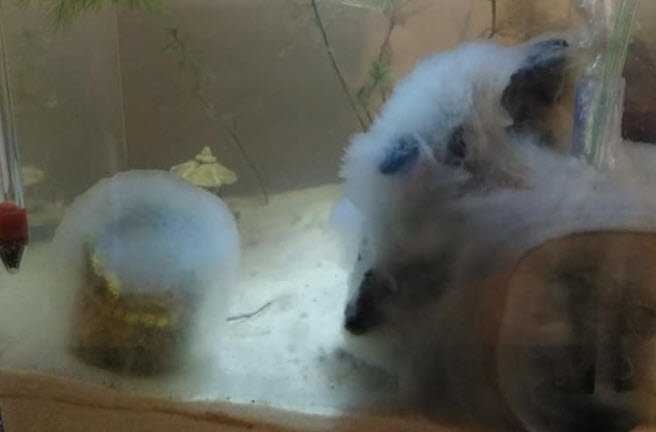
Many also come on social media and say that the “white stuff” killed my fish. Water mold is harmless. But the carbohydrates on which it feeds are NOT harmless. These carbohydrates can also feed something called “heterotrophic bacteria”. Heterotrophic bacteria include many species of very nasty pathogenic bacteria. The less aeration and water movement in the tank the more the pathogen bacteria can proliferate. These pathogenic bacteria can kill fish, sometimes overnight. And water mold will get the blame.
But note that white tufts and water mold are NOT a problem if there are no fish in the aquarium, such as when doing a fishless cycle. The mold will typically just disappear as the tank cycles.
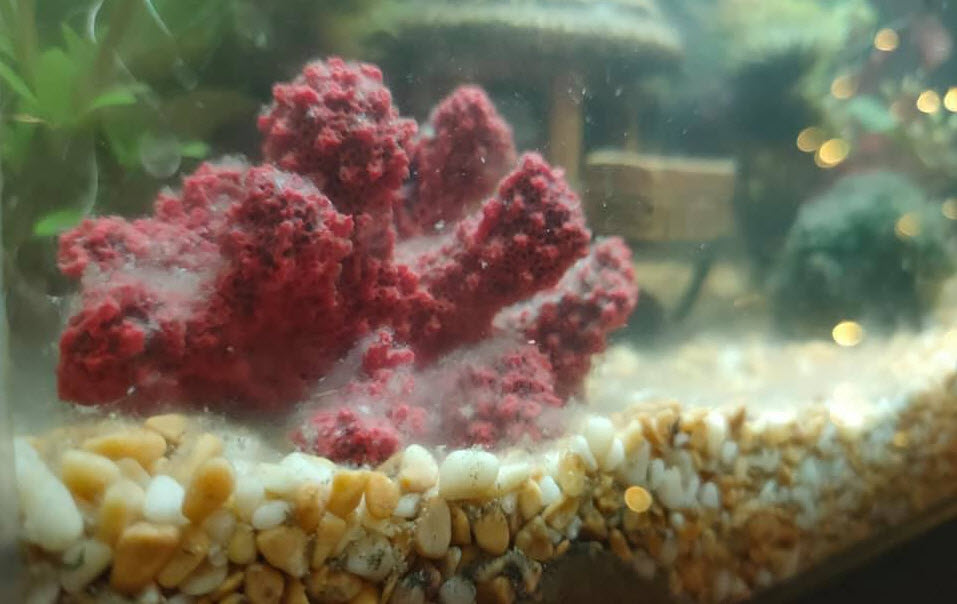
By far the best way to prevent both the water mold and the pathogenic bacteria from growing is by having a large well established biofilter. The biofilter and the organisms in the biofilter “eat” the organic particles and the dissolved organic compounds very rapidly. This prevents the water mold and the pathogenic bacteria from growing.
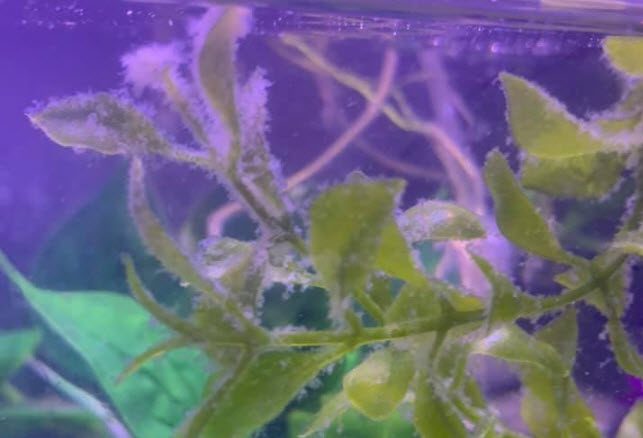
IF the main organism in these structures is a water mold it will typically exhaust its food sources and go away in a matter of days or sometimes as long as weeks. But if the major organism is algae, it can persist forever. Fish and shrimp love to eat biofilm. Axolotl will not eat it. This may explain why a surprising number of axolotl owners seem to get this white fog structure.

It is common for someone to say, “I did a water change yesterday and today the bottom of the aquarium is covered in a white fog”. What happens is that the water change brought in a bunch of things like dead algae and DOCs from a surface water supply (much more common than water suppliers will admit). The water mold grew on the particles (it can grow very fast!) and settled to the bottom of the aquarium. This gave a white fog on the bottom of the aquarium.

Sometimes long streamers of white are seen in the aquarium. These may be water molds, or they may be alga. There is no way to tell without a close microscopic inspection.
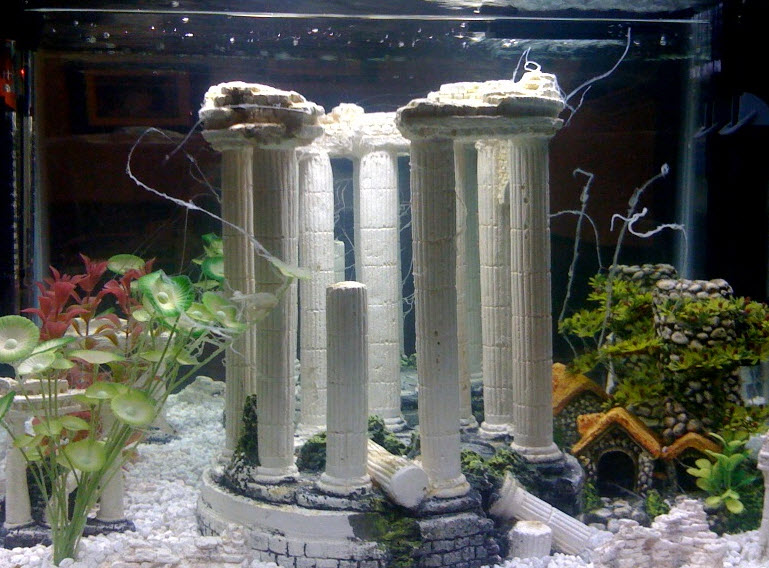

Water molds can be distinguished from very light staghorn algae by the speed with which water mold grows. Long streamers of white water mold can appear overnight while algae take months to grow that long. And staghorn is rather coarse threads, while water mold is very fine threads,

Another commonly seen phenomenon is white tufts on everything in the aquarium. The ornaments, the piping, the glass and rocks all get irregular white tufts of “stuff” on them. This can be either water mold, small colonial rotifers or algae. The water mold and rotifers grows much faster than the algae.
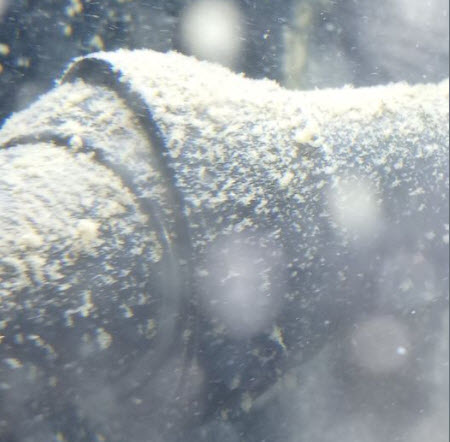
The white tufts above are probably a complex of branched rotifers like epistylis with some algae and water molds mixed in. Anytime these show up in an aquarium there is a problem that needs to be addressed rapidly IF and ONLY IF there are fish in the aquarium. For some reason the level of dissolved organic compounds in the water is far too high. Below is an example of aquarium glass which has the same problem (there are also appear to be some small hydra in this mix):
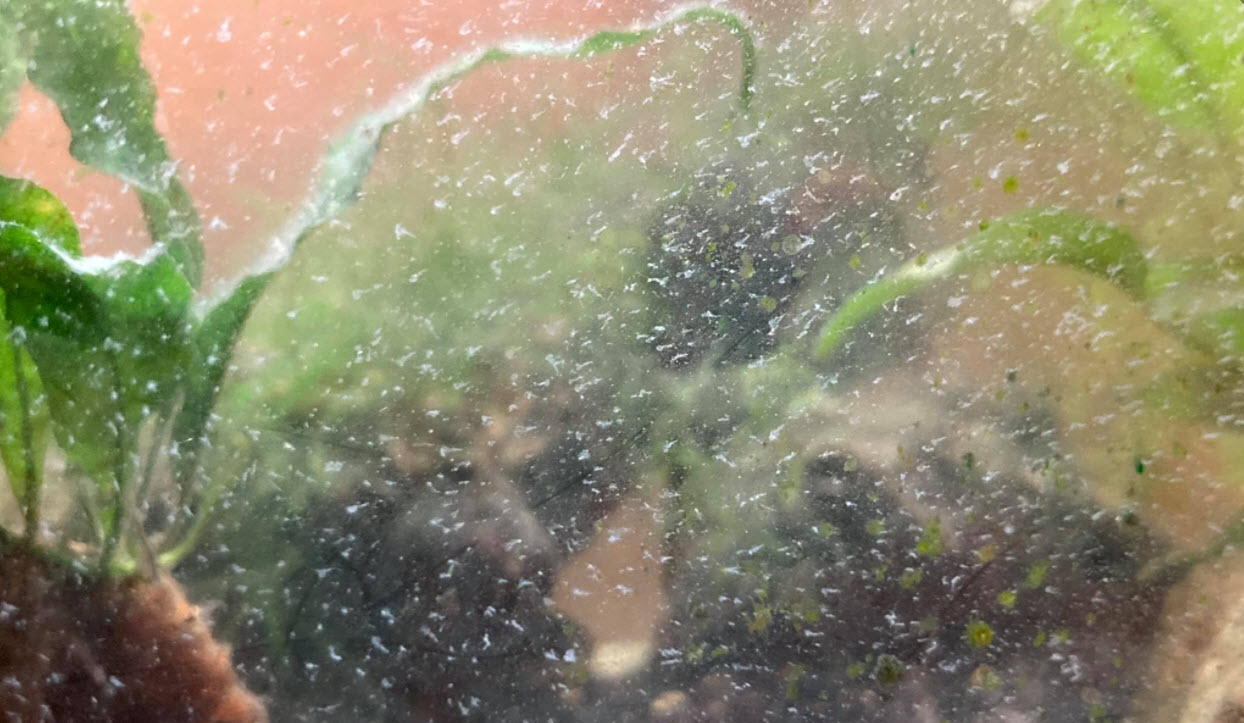
Behandeling
Treatment for all types of white fuzz and white tufts is the same:
- Most importantly find the source of the carbohydrates and get rid of it.
- Do several 95% water changes, this will not hurt the fish
- Add tons of aeration either by adding a wavemaker aimed at the surface of the water to create lots of choppy waves or by adding an air pump and air stones.
- Add more biofiltration. If you have a cartridge filter change out the cartridge with plastic pots scrubbers or foam.
- Do not clean your biofiltration except when the flow slows down through it.
- Feed only the amount of two fish eyeballs per day (six fish = twelve fish eyeballs)
- Do not feed any food with less than 45% protein in it
The “white fuzz” problem typically goes away in a short period of time with no ill effects.
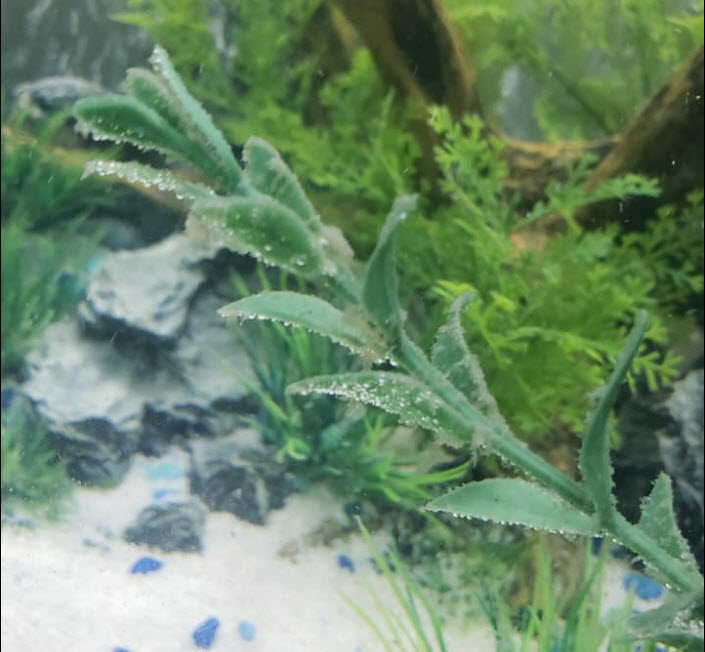
To go back to another article on more “conventional” water molds go to this link:


